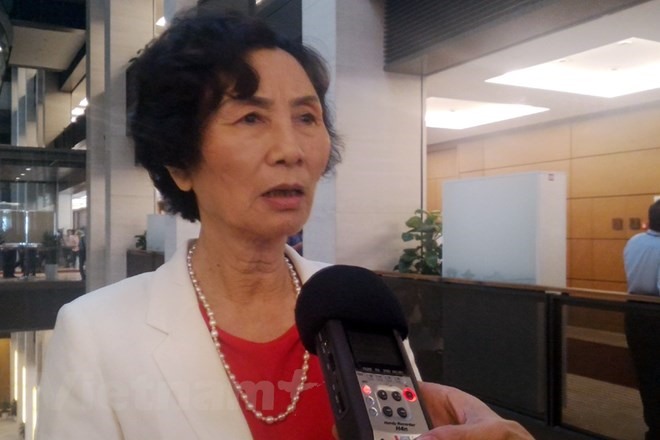 Opinion
Opinion

Professor Bùi Thị An talks to Nông thôn Ngày nay (Countryside Today) newspaper on the development of the agricultural sector
 |
| Professor Bùi Thị An |
Professor Bùi Thị An talks to Nông thôn Ngày nay (Countryside Today) newspaper on the development of the agricultural sector
In your opinion, what are Việt Nam’s biggest agricultural restructuring achievements in the past five years?
Agriculture has become a mainstay for the nation and a driving force in maintaining its high GDP growth rate for many years. Rice, aquatic products, orchards and vegetables have been particularly important.
The best example is the big volume of Vietnamese agricultural products that have been exported, adding a huge sum to State coffers thanks to the application of high-tech production practices.
What are the weakest points in the industry?
Although agriculture has become an economic mainstay, its development has not been sustainable or progressed evenly among different regions. The agriculture sector has faced challenges even in a bumper crop years due to poor market forecasts. This is food for thought for authorities to help the farmers secure a stable market for Vietnamese agricultural products.
Việt Nam is a tropical country and is endowed with favourable agricultural conditions. For example, some agricultural products could only be produced in Việt Nam and some are available for all year. However, we have not fully tapped these potentials.
What recommendations do you have for agriculture leaders?
I have five recommendations which I would like to share.
First, pay more attention to applying high tech in agricultural development. Second, focus on the legal aspects of the use of chemicals in the whole life cycle of an agricultural product – particularly pesticide residue. Third, create special policies for agriculture, particularly in the application of new technologies that boost development. Fourth, strictly monitor the use of pesticide to protect the health of farmers and consumers. And finally, work on improving living conditions for farmers, as 70 per cent of the Vietnamese population lives in the countryside and most of them subsist on farming.
Some people have suggested the Government abolish the land quota policy. How do you respond to that request?
I cannot agree more. It is the most important factor to ensure the success of the proposal to restructure our agriculture sector – that is, to change our small and scattered production system into a large-scale agricultural powerhouse.
To do this, we have to conduct a thorough study on the land limit of each locality and region. For example, this could be done easily in the Mekong Delta but not in the northern region, including the northern mountainous region.
That is why we should apply the policy of land accumulation step by step. I would also like to add that production models that have applied high-tech solutions often do not need as much land to be successful.
Last but not least is the issue of restructuring agriculture. Of course, this will require money in the form of preferential credit policies for farmers. We need to this policy for farmers, particularly for fishermen and salt makers. —VNS




